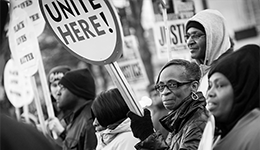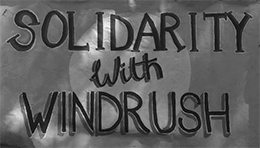
OPINION
Some workers are more equal than others
The Windrush generation was vital to building of post-war Britain. Today, black and minority ethnic workers play a vital NHS role. They are on the frontline in the battle against Covid-19.
As in the NHS, BME workers elsewhere have had to fight a battle on two fronts: workplace discrimination and trades union collusion with it.
Britain is a colour-blind society is a common belief. The racism faced by Windrush arrivals no longer exists. Sadly, the reality is rather different especially in workplaces.
According to a report, Racism Ruins Lives, “racism remains a widespread and endemic feature of everyday working life in Britain”.
A 2018 Guardian ICM survey found BME workers were twice as likely to be “overlooked” for promotion than their white workmates.
In the NHS, the chance of a BME doctor facing disciplinary action is double compared to that of a white doctor.
Workplace racial abuse and harassment are other obstacles facing BME. A Trades Union Congress survey, Racism at Work, finds 65% BME participants suffered in-work racial harassment and discrimination”.
The perpetrators are not just workmates, employers and their customers but trades union representatives also.
Racism Ruins Lives reveals, “A considerable number of participants reported experiencing racism at the hands of a trade union members [and or reps].”
One participant in the Racism at Work survey said: “You would think that being employed by a union this [racism] would not happen. To be honest it does. It is really like 50 years ago when black people could not be a member of a union.”
One of the report’s authors about the findings of Racism at Work says: “Equally worrying were reports that trade union members had colluded with managers and employers to conceal workplace racism and/or sustain racist practices”.
Stopping trades unions colluding with employers to discriminate against BME was one of the battles Windrush arrivals had to fight.
The difference between then and now is BME had the law to protect them in the form of Race Relations Acts, 1968 and 1976. Moreover, the Commission for Racial Equality (CRE) could prosecute both employers and trades unions.
The demise of CRE has been a prize for both. The task now is to force trades unions to defend its BME members facing racial discrimination and harassment.
That is not an easy call given that Unite, Britain biggest trades union, seems to have taken a neutral stance on workplace discrimination and harassment.
Like everyone else, BME are on lockdown because of Coronavirus. But the opportunity now must be taken not to lose the battle Windrush generation fought to force union to defend BME against in-work discrimination and harassment.
Contact Len McCluskey, Unite the Union, and ask him why his union appears neutral on race discrimination.
Become a contributor to this website
If you are a BME Unite member send details of your experience of union representation at work.
Or write a blog or tweet.

 Is Unite neutral on racism?
Is Unite neutral on racism? Merchant of racism
Merchant of racism